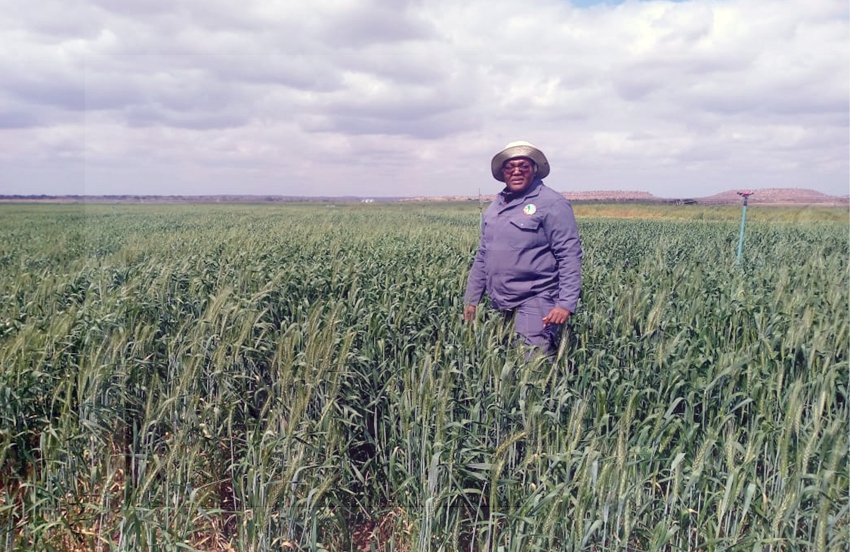A chit chat with Stellenbosch cross country tourists
26 Jul 2022
A group of 14 tourists from South Africa’s oldest town of Stellenbosch, in the Western Cape recently decided to traverse the lengths and breaths of Botswana, deep in the pristine Kalahari Desert just near Tsabong, to enjoy a scenery of wavy sand dunes.
The families took time from the oak-lined Stellenbosch, which is renowned for its awe inspiring fancy wine tours, to explore a bush safari and wetlands for a period spanning a month.
They were treated to wind rustles through the low laying shrubby trees, as well as a chance to relish the desert’s clean stark simplicity under the clear blue skies, adorned with red-tailed hawks, hallowing wild screeches with heart-warming melody.
The six families travelled thousands of kilometres by road, crisscrossing the wetlands and the dry lands entering the country through the Bokspits border post.
“It is our first time visiting Botswana and it has been a splendid, spectacular expedition!” exclaims Frenette Southwood.
“From Stellenbosch, we slept twice at Upington. Then we entered Botswana on 25 June at Bokspits, slept in Tsabong, then moved to Mabuasehube, from there we went to Ghanzi; then spent three nights at Moremi Game Reserve, went to Chobe, Kasane, Makgadikgadi, Nxai Nxai Pan, and we camped at Werda,” she narrates.
She says Botswana is beautiful and theirs was a lovely experience, and the people are friendly.
“We have been to Namibia a few times and we find Botswana to be unique and completely different”, she said. Southwood says while Namibia is endowed with beautiful and stunning landscapes, Botswana is more of bush safari, wildlife as well as the exquisite landscape.
She said they came to see the ‘Big Five’, but unfortunately, they did not see the magnificent lion.
“We heard their deep roars during the night at Mabuasehube, but now we are heading back home without seeing them.
Our desire is to see lions in real life, so we will come back ,” she says.
Southwood says Botswana is filled with pleasant surprises, startling beauty, with very few people. “The roads are open and the people are few.
Although this is peak season, we felt as though we were the only tourists in the country,” she says.
She says, far from being barren, the deserts are biologically rich habitats endowed with an array of wildlife and plants that have adapted to the conditions with a unique feel.
“So pristine, so peaceful, so quite that at some point I heard the sound of a lizard scuttling up a rock and these are beautiful sounds and sights that we rarely get to experience in urban areas,” says Southwood.
“We camped most of the time throughout our stay in Botswana. The challenges were that sometimes we found that there was no hot water in some of the facilities, no showers in some of the camps. There were stretches of bad roads here and there that led to the parks.
The road at Nxai Nxai Pan needs to be improved,” she says.
“In some places sometimes there was no electricity, no Wi-Fi, it was very varied rather, most of them were really good. However, there were no automatic teller machines pay points and we had to pay in cash and that means we had to travel carrying a lot of cash, which is not safe.
So it is very difficult to carry that much money,” says Southwood.
Despite the challenges, Southwood’s daughter, Zoe said she takes with her wonderful memories from Botswana. “The boat cruise on the Chobe River was fantastic, there were a lot of hippos, buffalos, giraffes, elephants and the sunset was amazing. We took a picture of the elephant walking just before the sunset, it was so-so beautiful!” she says flashing a bright smile.
The families particularly appreciated the knowledge they gained from various tour guides. They said they had a wonderful tour guide at the Okavango Delta, making the whole experience not just an excursion.
“The guides were very good at explaining the habits of the animals, and sharing knowledge. They had a wealth of knowledge about the wildlife and the plants, they explained different uses of the lilies and healing properties and nutritional properties of the plants as food and how it blends in nature,” Zoe said.
“We saw a traditional mokoro (hand dug canoe) and how it is made,” she said.
For Mary Divilliers, the guides were quite hospitable, adding “the tour guides picked lilies and they made necklaces for us. It did not last long, but it was so pretty and pleasant”.
In the Kgalagadi area, the tourists said they were awe struck by the startling beauty of a desert landscape, the people and the wildlife.
“We were fascinated by the vegetation and the desert’s astounding landscape beauty. Where we come from there is lots of detail in the environment, here it’s the simplicity and it is absolutely beautiful,” she says.
The tourists appreciated the spirit of ‘Botho’, “The respect that Batswana have for tourists is unbelievable.
We saw it everywhere, and how people treat one another is amazing, also there is peace and low crime rate.
You can leave your stuff outside and it will still be there the next day. If we were camping in South Africa we will pack everything away, here we are free,” she says.
Divilliers found the park fees to be a bit on the high side and needed to be reduced. She also called for more solar powered swiping pay points in tourism facilities.
Another member of the group, Mr Thomas Halbich seemed not to be ready to go back home after a month touring Botswana, “I just want to cry because I am leaving Botswana, one of the most beautiful places in the world. I love this place, it has the loveliest people.
I really enjoyed my stay here. The people have pride in their cultural heritage,” he says.
One of the firsts for him was to see the way Batswana build their small stock kraals.
“When we drove past Makopong I noticed that the guys had built a kraal with tree branches. It looks neat, it’s natural.
There is also respect between people, which we do not find often in South Africa,” he says. ENDS
Source : BOPA
Author : Calviniah Kgautlhe
Location : TSABONG
Event : INTERVIEW
Date : 26 Jul 2022






